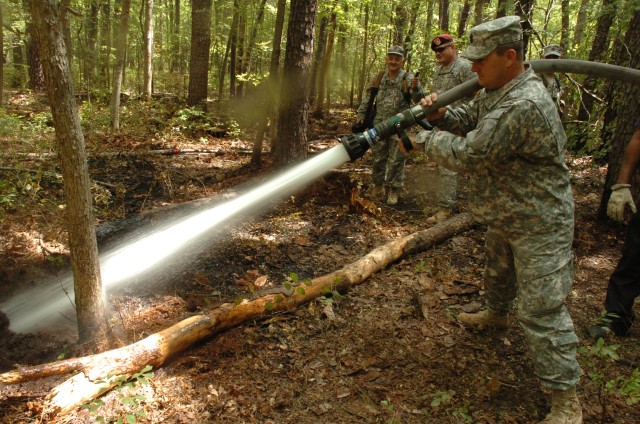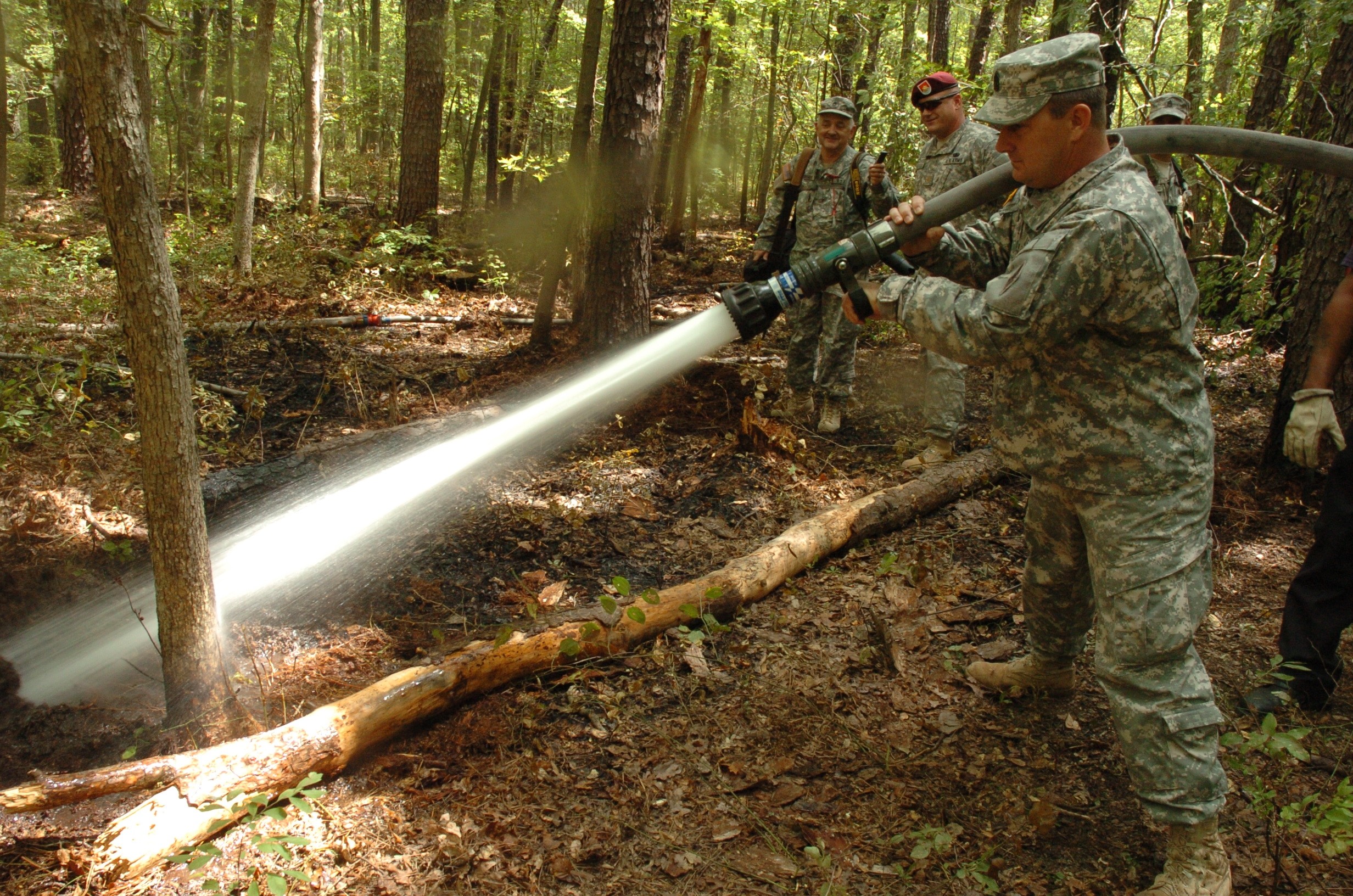FORT MEADE, Md. (Army News Service, Aug. 28, 2008) -- For the 55th Signal Company, Combat Camera, it all started with a smoke grenade, dry conditions and a layer of leaves in the woods.
The 55th Signal Company's most recent training exercise was anything but routine; their training resulted in a three-day smoldering fire in the range area. Instead of looking upon the situation as a crisis, however, the unit's commander saw it as yet another chance to learn.
"This was an unexpected training opportunity," said Maj. Donald W. Reeves, commander, 55th Signal Company. "We started the mess, so it's only right that we help clean it up."
Combat Camera had been given the authorization to use pyrotechnics for their recent field training exercise at the Maryland installation. All the proper precautions were taken before the exercise to ensure Soldiers would not be injured. What the unit's risk assessment did not consider, however, was using smoke grenades during dry forest conditions.
The fire started in what was initially a small area, but eventually spread to nearly three acres. Firefighters there had to dig deep under the black charred leaves to uncover the fire still smoldering underground.
To assist in smothering the spreading fire, volunteers from several Fort Meade units were called in. About ten members of the Public Affairs Advanced Noncommissioned Officers Course, and between nearly 40 members of the 55th Combat Camera assisted in finding and removing the threat.
Suppressing the fire was a team effort with expert guidance provided by Capt. Ramon Davis, of the Fort Meade fire department.
"It is quite common for Fort Meade to have small hidden fires during the dryer season of the year," said Davis. "The also get range fires from time to time."
Suppressing the fire was not an easy task. Those assisting trenched around trees so water could be soaked into the root systems. The effort meant fireman did not need to repeatedly come back to check on those areas.
"It is a common thing to have a fire, but not to have the fire continue for several days and burn underneath a top layer of leaves and roots," said Capt. Joe Vanmeter, of the Fort Meade fire department. "To make sure the fire is out, you have to do a lot of physical digging to get under the surface of the roots -- to get down and dirty."
Training areas are limited at Fort Meade, so they are valuable to the units stationed there. A fire on one of those ranges could have serious impact on the important training that happens at the installation.
"We have very little training area available," said Sgt. 1st Class, Mark A. Porter, U.S. Army Signal School, Fort Meade. "To lose some to a fire -- even temporarily while it is reworked or reseeded -- creates a big impact on our training."
Those involved in the cleanup agreed that one lesson learned from the experience is to pay special attention to surrounding areas when using incendiary devices for training.
"You need to do a risk assessment and take everything into consideration when using pyrotechnics," Reeves said.


Social Sharing